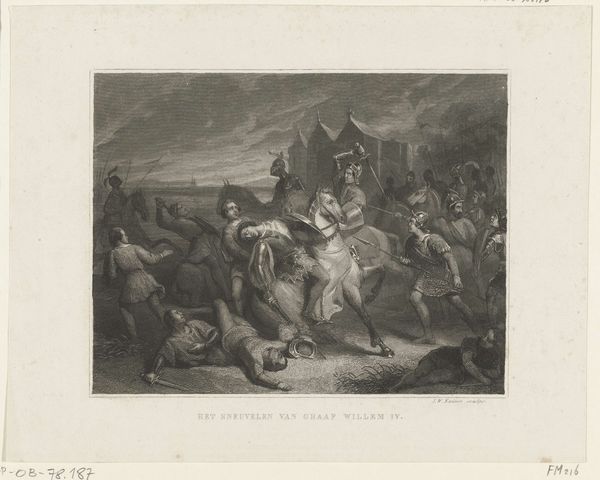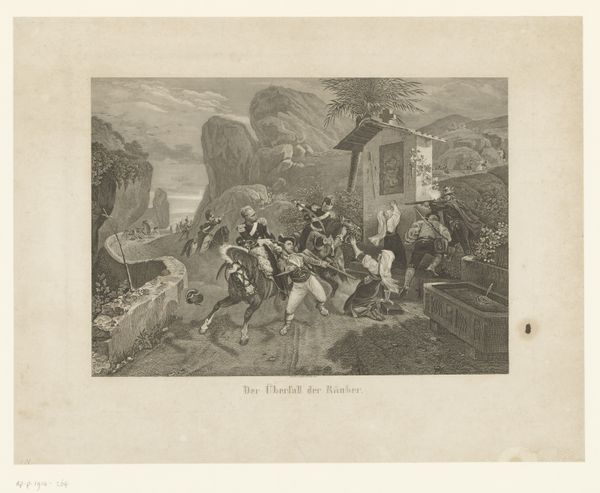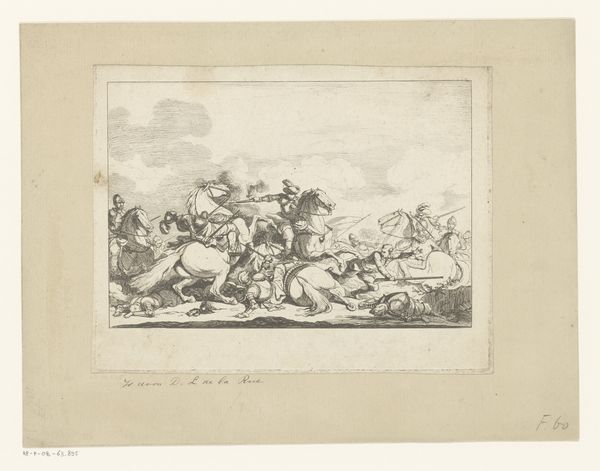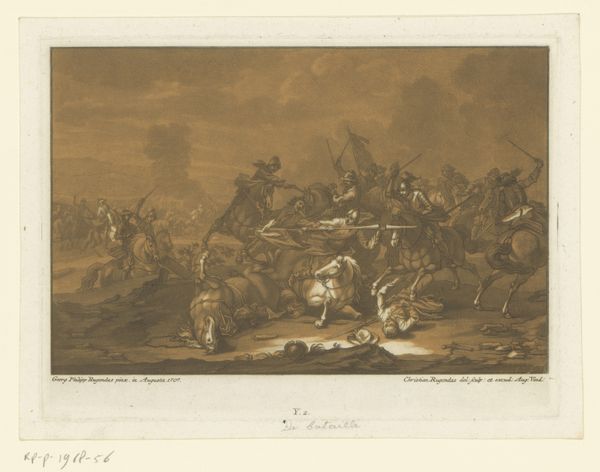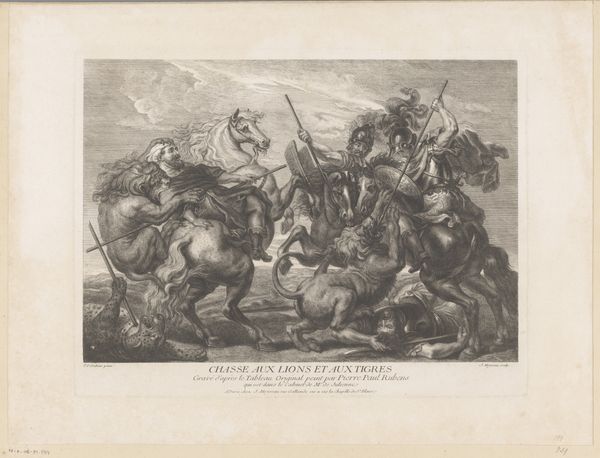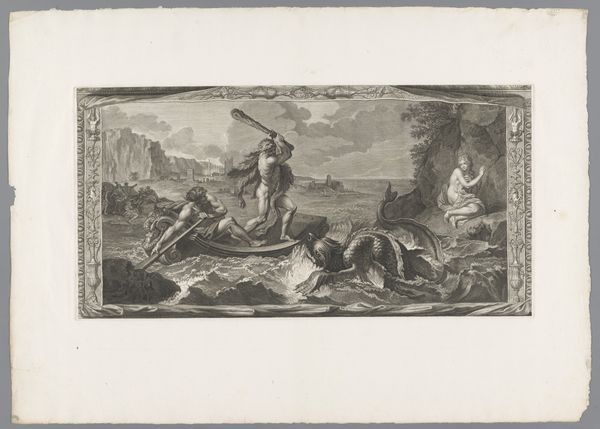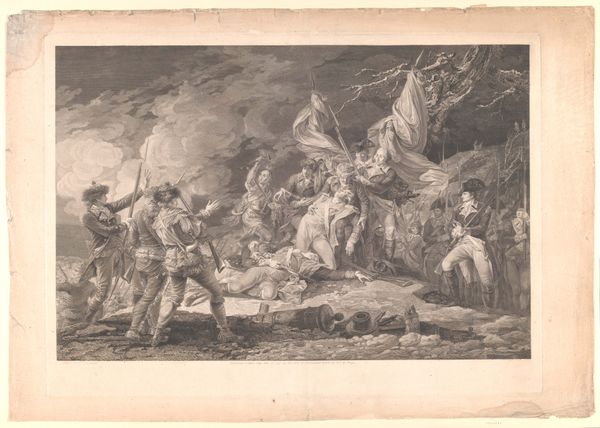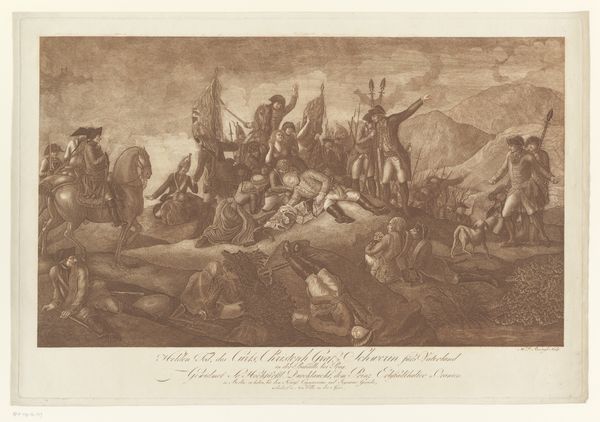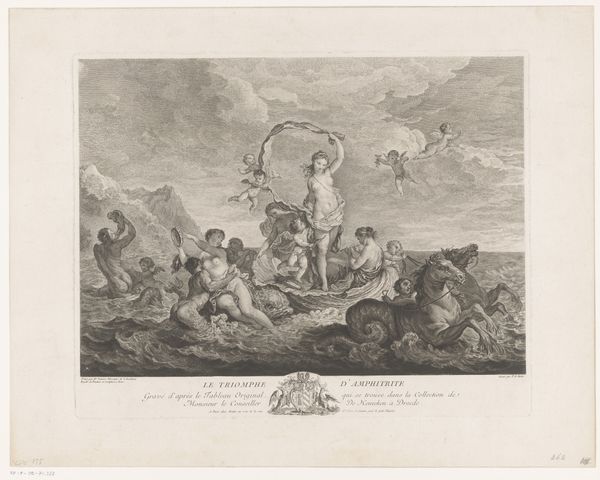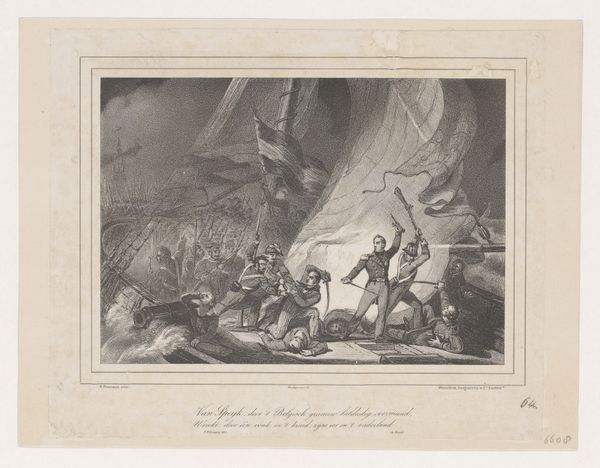
print, engraving
#
narrative-art
# print
#
old engraving style
#
figuration
#
romanticism
#
line
#
history-painting
#
engraving
Dimensions: height 135 mm, width 175 mm
Copyright: Rijks Museum: Open Domain
Curator: What a stark and rather grim image. I find it immediately evokes feelings of loss and perhaps a touch of the romantic idealization of war. Editor: This is "Death of General Montgomery, 1775," an engraving by Johann Wilhelm Baumann. Dating from between 1832 and 1843, it illustrates a key moment from the American Revolutionary War. Curator: Visually, the central motif of a fallen hero dominates. The fallen general, around whom the battle seemingly continues, becomes a kind of symbol of sacrifice and valor—especially if we consider the style resembling Romanticism, which certainly carries iconographic implications in the image's reception. Editor: Absolutely. The iconography of death, particularly in a war scene, carries profound cultural weight. Notice how Montgomery is surrounded by active soldiers, yet he’s bathed in light. He's central, supine, almost Christ-like. Is Baumann implying that his sacrifice possesses a sanctified dimension for the war and for America's struggle to gain independence? Curator: Indeed, the portrayal resonates deeply with historical precedents where heroic deaths shaped national identities. This print likely served a significant role in shaping American collective memory, portraying the Revolution's leaders in almost saintly terms. Think about how prints like these circulated; they shaped public perception about the revolution and its cost. It helped build consensus but also contributed to what we could consider early national myth-making. Editor: Looking closer, I'm drawn to the flags. They appear to be a focal point, rising up even behind the general himself. What do you think Baumann intended them to communicate in terms of his larger narrative? Curator: The presence of the flags—American and otherwise—amidst the chaos anchors the struggle to the high ideals behind the revolution. Despite the loss depicted, the flags symbolize unwavering principles and perseverance, and served to reinforce support for the cause. Editor: Yes. The symbols are designed to transcend mere battle narrative, lifting the image to one of eternal remembrance, so those ideals, and especially Montgomery’s sacrifices for them, would continue resonating. Curator: Considering Baumann's temporal distance from the actual event—half a century later—it's plausible this print seeks to bolster continued American solidarity, even past the initial revolutionary fervor. I appreciate its visual narrative complexity that blends loss, Romanticism, and political messaging to promote an historical consciousness. Editor: I agree; analyzing it through the lens of symbolism, cultural memory, and historicism offers a rich, interdisciplinary understanding of the piece's place within history.
Comments
No comments
Be the first to comment and join the conversation on the ultimate creative platform.
